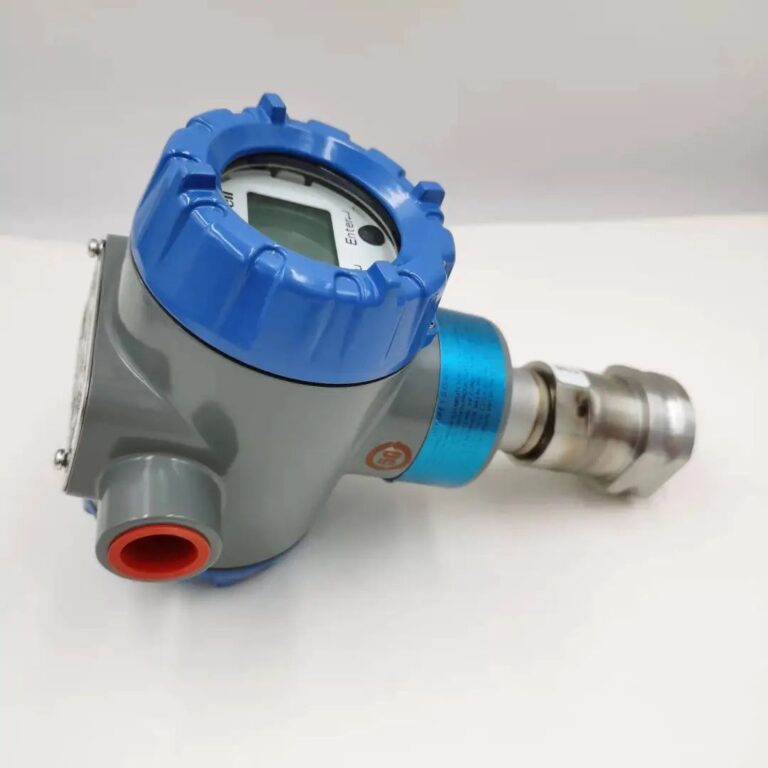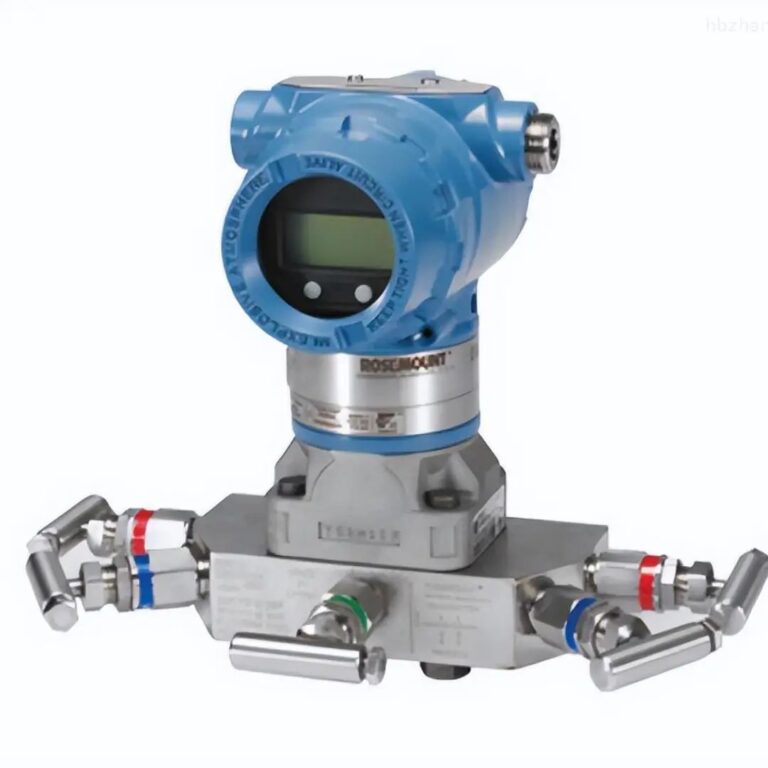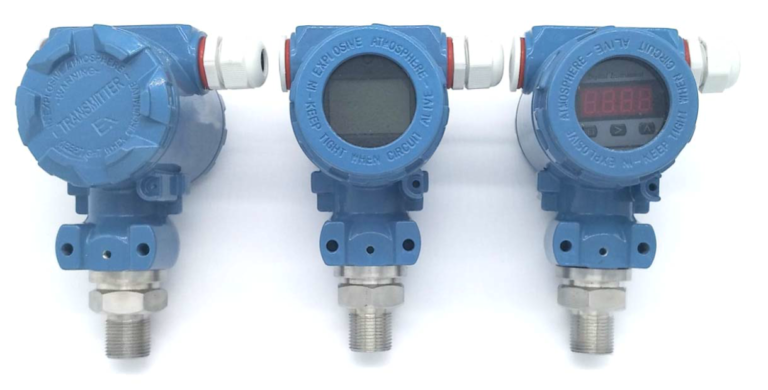Answer: Since the common faults in differential pressure transmitters are zero-point drift and blockage of the pressure guide tube, calibration of the scale point by point is rarely performed in the field. Instead, the zero-point and trend of changes are checked, as follows:
- Zero-point check: Close the positive and negative pressure shut-off valves. Open the balance valve. At this point, the current of the electric differential pressure transmitter should be 4mA.
- Change trend check: After the zero-point check, return all the valves to their original open positions. Open the drain valve of the negative pressure chamber. At this point, the output of the transmitter should be at its maximum, i.e., the electric differential pressure transmitter should be over 20mA. If only the drain valve of the positive pressure chamber is opened, the output should be at its minimum, i.e., the electric differential pressure transmitter should be at 4mA. If little or no medium is discharged when the drain valve is opened, this indicates a blockage in the pressure guide tube, which should be cleared.

Work Procedure:
- Before addressing the fault, inform the process team. If the instrument is part of a control loop, the loop should be set to manual operation. If the instrument is part of an interlock system, the interlock condition should be bypassed.
- Analyze, judge, and handle the fault according to its symptoms:
- a. If the circuit board needs to be checked or replaced, turn off the instrument’s power supply first.
- b. When performing discharge or zero-point checks, or disassembling and replacing the instrument, ensure that the primary valve is completely closed, the vent valve is opened, the medium is fully discharged, and proper environmental protection measures are taken. Pay attention to appropriate protective measures based on the characteristics of the medium and environmental factors, including:
- (1) Toxic or harmful media.
- (2) Strongly corrosive media, such as acids or bases.
- (3) High-temperature, high-pressure, or highly flammable media, such as oil slurry.
- (4) Flammable or explosive media, such as liquid hydrocarbons or gas.
- (5) Other general types of media.
- c. When disassembling the instrument, use the correct tools.
- d. Place disassembled components on a clean cloth or film in an orderly manner.
- e. Label disassembled components to ensure correct reassembly.
- After the fault is handled, check whether explosion-proof hoses, explosion-proof junction boxes, instrument protection boxes, etc., have been restored to their original condition and are intact.
- Once the handling is complete, inform the process team and switch the loop from manual to automatic control, or cancel the bypass, and confirm that it is functioning properly.
- Clean the worksite and protect the environment.

Hazard Identification:
- Failing to inform the process team and not setting the loop to manual or bypass operation could affect production, potentially leading to shutdowns or equipment damage.
- Checking or replacing circuit boards while the instrument is powered may damage the circuit board.
- Not ensuring that the primary valve is tightly closed or that the medium is completely discharged before performing zero-point checks or disassembly could disrupt production, pollute the environment, and even cause fire, explosions, or personal injury.
- (1) Potential risk of poisoning personnel.
- (2) Potential risk of chemical burns or skin corrosion.
- (3) Potential risk of causing fire, explosion, and personal injury.
- Using incorrect tools for disassembly may damage components, causing nuts to slip.
- Failure to label disassembled components could lead to incorrect reassembly and man-made faults.

Safety Measures:
- Supervise and confirm that the process has been switched to manual control or bypass. Avoid making the switch yourself.
- When performing discharge or zero-point checks, or disassembling and replacing instruments, at least two people must be present, one of whom should be an experienced technician. They should ensure that the primary valve is tightly closed, the vent valve is opened, the medium is fully discharged, and environmental protection measures are taken. The two-person rule must be adhered to, and protective face shields must be worn when disassembling the instrument.
- (1) During discharge, personnel should stand upwind and use steam to purge. If the concentration is high, an oxygen respirator must be worn. Protective gloves and safety goggles must also be worn during the operation.
- (2) During discharge, personnel should stand upwind and use steam to purge. If the concentration is high, an oxygen respirator must be worn. Protective acid-base gloves and face shields must also be worn during the operation.
- (3) During discharge, the medium should first be cooled, and the vent valve should be slowly opened for discharge. Steam should be used for purging, and protective gloves and goggles should be worn during the operation.
- (4) Use copper tools when discharging, and avoid hitting or piercing the equipment. Acid-base gloves and face shields must be worn.
- (5) It is best for personnel to stand on a higher level than the discharge port. Protective gloves and goggles must be worn during the operation.

Common Fault Phenomena, Analysis, Judgment, and Solutions for Differential Pressure Transmitters:
No indication on DCS (Distributed Control System):
- Possible cause: Power fuse burned out.
- Solution: Check the power fuse and replace it with a new one.
- Possible cause: Instrument cable grounded.
- Solution: Check the instrument cable and remove the ground fault.
- Possible cause: Water entered the explosion-proof junction box of the instrument.
- Solution: Remove the water in the explosion-proof junction box and reinforce the sealing.
- Possible cause: Instrument malfunction (e.g., circuit board damage, diaphragm box damage, grounding of terminal).
- Solution: Inspect the instrument, repair the fault, or replace with a new one.
- Possible cause: Safety barrier burned out.
- Solution: Check the safety barrier and replace it with a new one.
- Possible cause: Control system card channel fault.
- Solution: Inspect the relevant card channel.
- Possible cause: Low power supply voltage.
- Solution: Inspect the circuit and address the voltage issue.
- Possible cause: Incorrect power connection polarity.
- Solution: Check and correct the wiring.
- Possible cause: Instrument output exceeds the range.
- Solution: Resolve the over-range issue.
- Possible cause: Power fuse burned out.
The on-site instrument displays normally, but the DCS displays lower values:
- Possible cause: Negative terminal of the instrument cable is grounded.
- Solution: Inspect the instrument cable and eliminate the grounding fault.
- Possible cause: Instrument’s negative terminal has a grounding fault.
- Solution: Inspect the instrument’s negative terminal, resolve the grounding issue, or replace the instrument.
- Possible cause: Mismatch in the range settings between the DCS and the instrument.
- Solution: Check and match the range settings of the instrument and DCS.
- Possible cause: Negative terminal of the instrument cable is grounded.
Incorrect instrument reading:
- Possible cause: Incorrect or drifting zero-point.
- Solution: Adjust the zero-point and check for drift.
- Possible cause: Blockage or contamination in the pressure pipe or diaphragm box.
- Solution: Clear the blockage or contamination.
- Possible cause: Leakage in the pressure pipe, valve group, diaphragm box, or connections.
- Solution: Check for leaks and address them.
- Possible cause: Incorrect range.
- Solution: Recalibrate the instrument.
- Possible cause: Diaphragm box damage.
- Solution: Inspect and, if necessary, replace the instrument.
- Possible cause: Incorrect or drifting zero-point.
Instrument response is sluggish:
- Possible cause: Excessive damping.
- Solution: Adjust the damping.
- Possible cause: Blockage or partial blockage in the pressure pipe or diaphragm box.
- Solution: Clear the blockage and contaminants.
- Possible cause: Malfunction of the control valve.
- Solution: Inspect and address the control valve fault.
- Possible cause: Excessive damping.
Large fluctuations in instrument readings:
- Possible cause: Insufficient damping.
- Solution: Adjust the damping.
- Possible cause: Process fluctuations.
- Solution: Confirm the issue with the process team.
- Possible cause: Improper PID parameter tuning.
- Solution: Assist the process team in adjusting the PID parameters.
- Possible cause: Insufficient damping.
